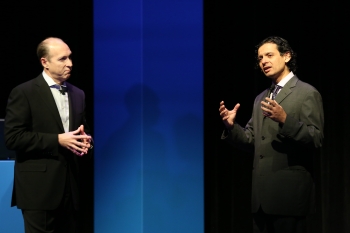The California-based company, which is facing a shrinking market of personal computers, said the new chip would deliver double the performance of the previous generation and was designed for corporate customers to better face big data.
The chip allows more data to be held in memory instead of on hard drives so it can be quickly analyzed.
The new Xeon was unveiled at the Exploratorium museum in California on Tuesday, and Intel said the product is designed to tackle the Internet of Things; a whole new market of connected devices that the company projects will grow to consist of at least 30 billion devices by 2020.
|
|
Intel also pointed to a forecast that said big data and advanced analytics will be worth roughly $32.4 billion by 2017.
Diane Bryant, general manager of Intel's Data Center Group, told reporters on Tuesday the new Xeon chip is aimed at customers like retailers, airlines, stock exchanges and credit card companies keen to instantly crunch growing troves of data.
"The Xeon E7 v2 will give a highly anticipated boost to enterprise IT, giving them the ability to deploy new capabilities that were previously impossible," Bryant said.
Reuters reported in Q4 2013 that Intel's Data Centre Group's sales grew 7%, but was below the company's expectations due to slow spending by enterprise, a category that includes corporations and governments. Reuters also said spending by Web-based companies was robust, however.
Chief Financial Officer Stacy Smith said in January that weak demand from enterprise customers meant the Data Center Group's revenues this year would "probably come in toward the bottom of his previous growth estimate of 10% to 15%."
Intel said in a statement that starting today, 21 system manufacturers from around the world will announce more than 40 Intel Xeon processor E7 v2 family-based platforms, including Asus, Cisco, Dell, IBM, NEC and others.
The new processor family is built for up to 32-socket8 servers, with configurations supporting up to 15 processing cores and up to 1.5 terabytes (TB) of memory per socket.
For more information check out Intel's product launch video below.









































